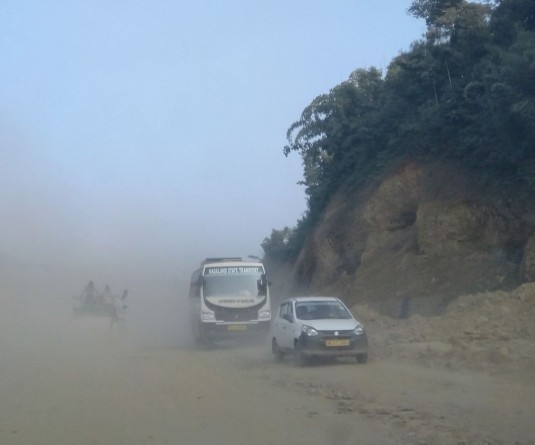State’s two regional parties yet to receive funds via electoral bonds
Moa Jamir
Dimapur | October 19
Regional parties in Nagaland seem to have ‘earned’ more while in power or during election year, while they are yet to receive funds via electoral bonds, a recent analysis by the Association for Democratic Reforms (ADR) indicated.
The two regional parties of Nagaland, out 42 in India of analysed in the ADR’s “Analysis of Income & Expenditure of Regional Political Parties for FY 2019-20” released on October 11, were the Naga People’s Front (NPF) and Nationalist Democratic Progressive Party (NDPP).
The ADR, which works in the area of electoral and political reforms, source the data from Audited accounts submitted by the political parties to the Income Tax Department and the Election Commission of India (ECI).
NDPP and NPF’s Income and Expenditure
As per the report, both parties saw drastic fall in income in Financial Year (FY) 2019-20 when compared with FY 2018-19.
For instance, NDPP’s income saw a massive fall from Rs 7.985 crore in 2018-19 to Rs 1.125 crore in 2019-20 or an 85.91% decrease.
The fall in income was third highest among the 42 regional parties after the Pattali Makkal Katchi (91.13%) and Sikkim Democratic Front (SDF) 94.64%.
Likewise, the NPF’s income fell by 51.85% from Rs 8.13 lakh in 2018-19 to Rs 3.92 lakh in 2019-20 or an 85.91% decrease.
Both years represented drastic falls of NPF’s income, while not in power, as for the year ended March 31, 2018, the party’s income was Rs 2.10 crore.
Nagaland’s State Assembly election was held in the 2017-18 FY, and thereafter NDPP-led alliance came to power.
Meanwhile, NPF’s fortune seemed to be sliding further as its audited report submitted to the ECI showed that the party’s income decreased to Rs 3.85 lakh in FY 2020-21.
On the expenditure side, while NDPP spent most of its income on ‘Election/General Propaganda’ (Rs 0.80 or 71.24%), it was ‘Depreciation,’ of fixed assets for NPF at Rs 0.112 crore or 73.684%.
The next top item expenditure for NDPP was ‘Administrative Cost’ (10.69%), followed by ‘Employee Costs (9.08%); and Other Expenditure (8.99%).
For NPF, 14.474% of its income was spent on ‘Salaries’ while ‘Refreshment Expenses’ and ‘Other ‘Expenditure’ were 6.579% and 5.263% respectively.
Comparison of the income and expenditure showed that the NDPP was in green while the NPF was in red. The former had Rs 0.002 unspent income after the audit, while the latter was in deficit of -Rs 0.113 crore.
Sources of Income
Both parties gave the source of funds as Voluntary Contribution or Donations & Contribution.
Detailed analysis of the Audited Reports and Contribution Reports submitted by the parties indicated that both parties so far, have not received funds via electoral bonds, a scheme announced by the Union Government in 2017, and notified on January 29, 2018.
According to the ADR, given the anonymity provided to donors by the scheme, Electoral Bonds have emerged as the most popular mode of donations to regional political parties for FY 2019-20 and more than 50.97% of the total income (Rs 447.498 crore) of the 42 parties analysed received donations via the scheme.
In the case of NDPP, the highest single amount received in 2018-19 was Rs 58 lakh from a construction company; however, an individual also contributed Rs 50 lakh in four cheques. Another individual and an enterprise also contributed Rs 20 lakh each.
In 2019-20, the NPPP’s Contribution Report informed that it did not receive any money in excess of Rs 20,000. Other details on contribution were not available.
For the NPF, all contributions for from 2017-18 to 2020-21 were reportedly received in cash.
Interestingly, however, during the 2nd year in power in 2014-15, the party received five contributions in excess of Rs 20,000 with three individuals and one enterprise contributing Rs 20 lakh each. ‘Division Office Contributions’ seem to be the highest source of income for the NPF thereafter.
NPF’s fortune has been volatile over the years with income of Rs 21.18 lakh in 2013-14; Rs 80.68 lakh in 2014-15; Rs 43.90 lakh; and Rs 41.11 lakh in 2016-17.
It received the highest amount of Rs 2.10 crore in 2017-18, which incidentally was an election year.
Mandatory audited reports
According to the ADR, the ECI has made it mandatory for the parties to submit details of their audited reports annually to the Commission via a letter in November 2014.
The due date for submission of annual audited accounts for the parties 2019-20 was extended to June 20, 2021 in view the COVID-19 pandemic. Accordingly, 37 of the 42 regional parties including NDPP submitted their audit reports on time, while 5 parties including NPF delayed their submission ranging from 27 days to 77 days.
However, only three national or regional parties including NPF, however, have submitted audit report for 2020-21.
The 42 regional parties analysed were BJD, TDP, SHS, DMK, SP, AAP, YSR-C, AIADMK, JDS, TRS, SAD, JDU, AJSU, RJD, JVM-P, IUML, PMK, JMM, SDF, LJP, INLD, RLD, JJP, NDPP, SKM, DMDK, AIMIM, MGP, AIUDF, GFP, AIFB, MNF, NPF, JKPDP, KC-M, AGP, ZNP, IPFT, PDA, AINRC, MPC and RLP.
Among others, the ADR report highlighted that TRS reported highest income of Rs 130.46 crore, followed by SHS (Rs 111.403 crore) and YSR-C (Rs 92.739 crore). On expenditure side, BJD spent the most at Rs 186.13 crore, followed by TDP (Rs 108.84 crore) and SHS (Rs 98.379 crore).
The regional parties received Rs 877.957 crore as income and spent Rs 742.535 crore in 2019-20.
Out of 39 parties from 42 political parties whose data is available for both the years, 23 parties have shown an increase in their income from FY 2018-19 to FY 2019-20 while 16 parties have shown a decline in their income during this period, the report added.






